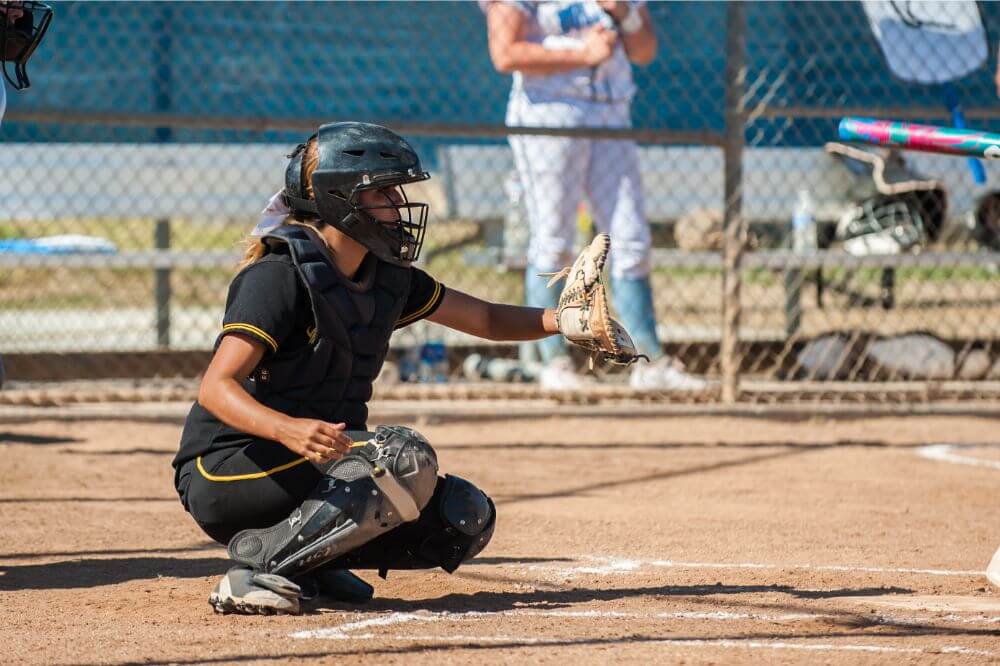Baseball is of course a fairly physical sport. With that being said, as any professional player knows, there is a mental aspect involved as well. This is especially the case when it comes to putting good thought into what is the best pitch to throw at any given time.
A catcher must choose exactly what kind of pitch the pitcher should throw and where to throw it, to strike out the batter. Now, in baseball, it actually takes two to perform this task. You need the pitcher and the catcher.
In order for a strike to be thrown, the catcher actually has to catch the pitch thrown by the pitcher. Therefore, it is essential that the pitcher and the catcher be able to communicate with each other effectively. The catcher needs to know what kind of pitch is coming and where it is coming in at.
However, of course, the catcher needs to be able to communicate this to the pitcher without letting the batter on the opposing team know. For this reason, catchers use hand signals to tell the pitcher what kind of pitch to throw.
Understanding catcher signals in baseball can be somewhat complicated, at least until you learn what the different signals are. Right now, we’re going to provide you with the basics about understanding catcher signals in baseball.
Basic Catcher Signals – Two Types
What is important to know is that catcher signals come in two types. The first signal that catchers will give their pitchers indicates the type of pitch that should be thrown.
The second signal that catchers will give their pitchers has to do it with the location at which the pitch should be thrown to.
In other words, the second signal will tell the pitcher to throw down the center, to the left of the plate, to the right, or anything else of the sort.
Catcher Signals by Pitch Type
Now, exactly which signals are used for which types of pitches may differ from one baseball team to another. However, the standard is that one finger pointed down indicates that a fastball is being called for.
Then, two fingers pointed down indicates the curveball. Three fingers pointed down indicates a slider ball is being called for.
Then, four fingers pointed down calls for a changeup pitch to be thrown. That said, this can vary from one catcher and pitcher team to another.
Catcher Signals by Pitch Location
Choosing the location of the pitch is just as important as the pitch type itself. There are actually two ways for a catcher to indicate the location of the pitch. First, catchers may choose to flash a certain number with their fingers directly after the first signal.
For instance, a pitcher may point one finger downwards to indicate that the pitch should be thrown to the outside of the plate. Pointing two fingers down may indicate that the pitch should be thrown to the inside of the plate.
For example, a fastball that should be thrown to the outside will see a catcher pointing one finger down, followed by that same finger pointing down again very quickly.
The other way that a catcher may indicate the location that the ball should be thrown to is by tilting their hand. For example, as a pitcher points one finger down to indicate a fastball, they may tilt their hand either to the left or the right.
Catcher Signals with a Runner on Second Base
What is interesting to note is that the catcher then has to change his or her signals when there is a runner on second base. This is because the runner on second base has a clear view of the catcher and could therefore technically decode the signals.
Therefore, with a runner on second base, the catcher will make the signal much more complex. There will usually be a series of very complex and random signals. However, most of these signals are going to be simple decoys or distractions.
Only the pitcher is going to know the signals to look out for, and what order they should be in. Of course, communication is very essential here, because the pitcher has to be able to recognize all of the false signals.
Other Signals from a Catcher
Catchers don’t just signal to the pitcher the pitches that should be thrown. They can also call for other actions to be taken.
For instance, a catcher can provide signals to hold the runner, to shake off a pitch, for a pickoff, or for a pitch-out. Exactly what these signals are will vary from one catcher or baseball team to another.
Understanding Catcher Signals
You should now know all of the basics about catcher signals to get you started as a catcher or a pitcher in the great game of baseball.
Thanks for stopping by ~Jeremy

